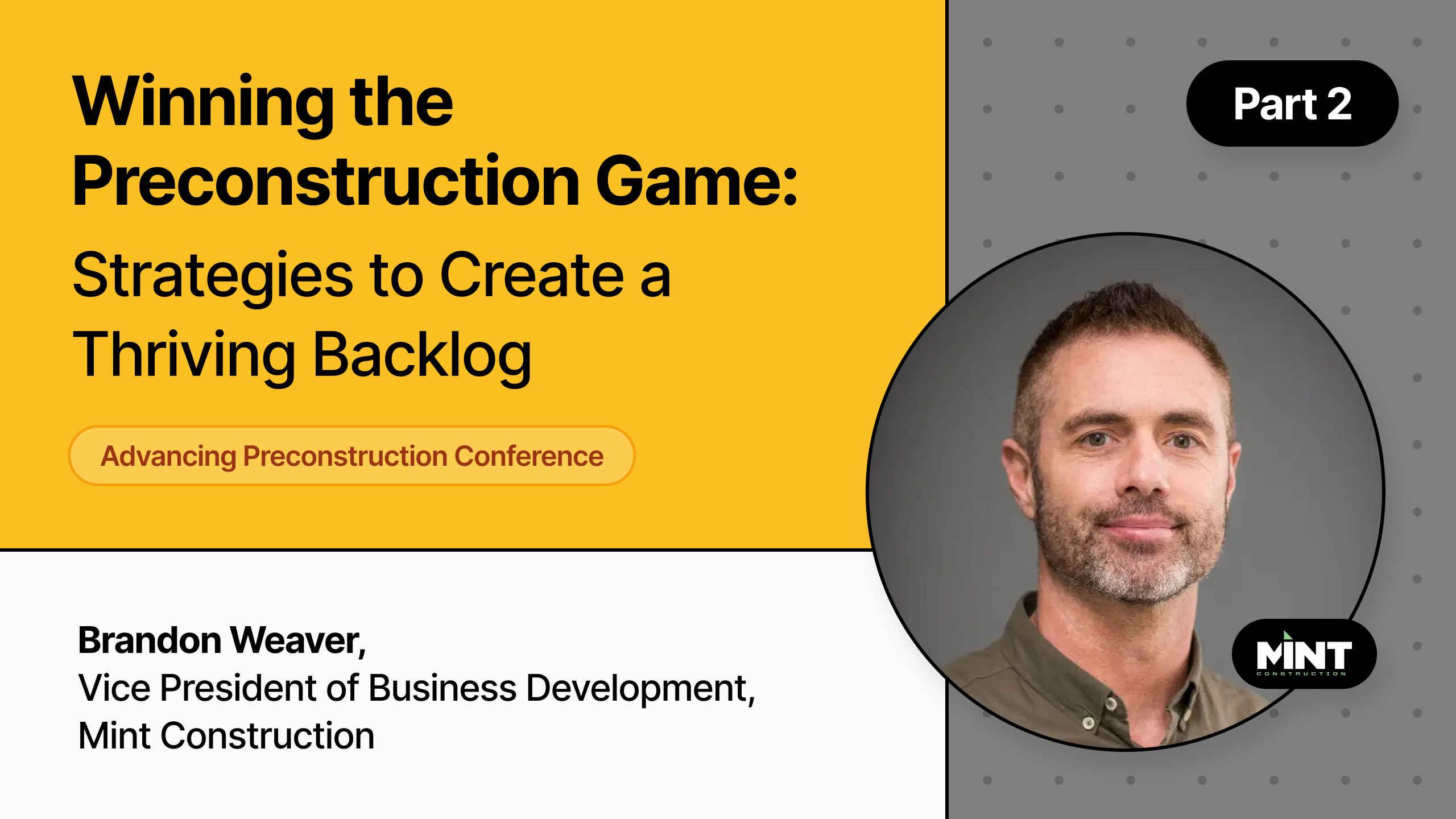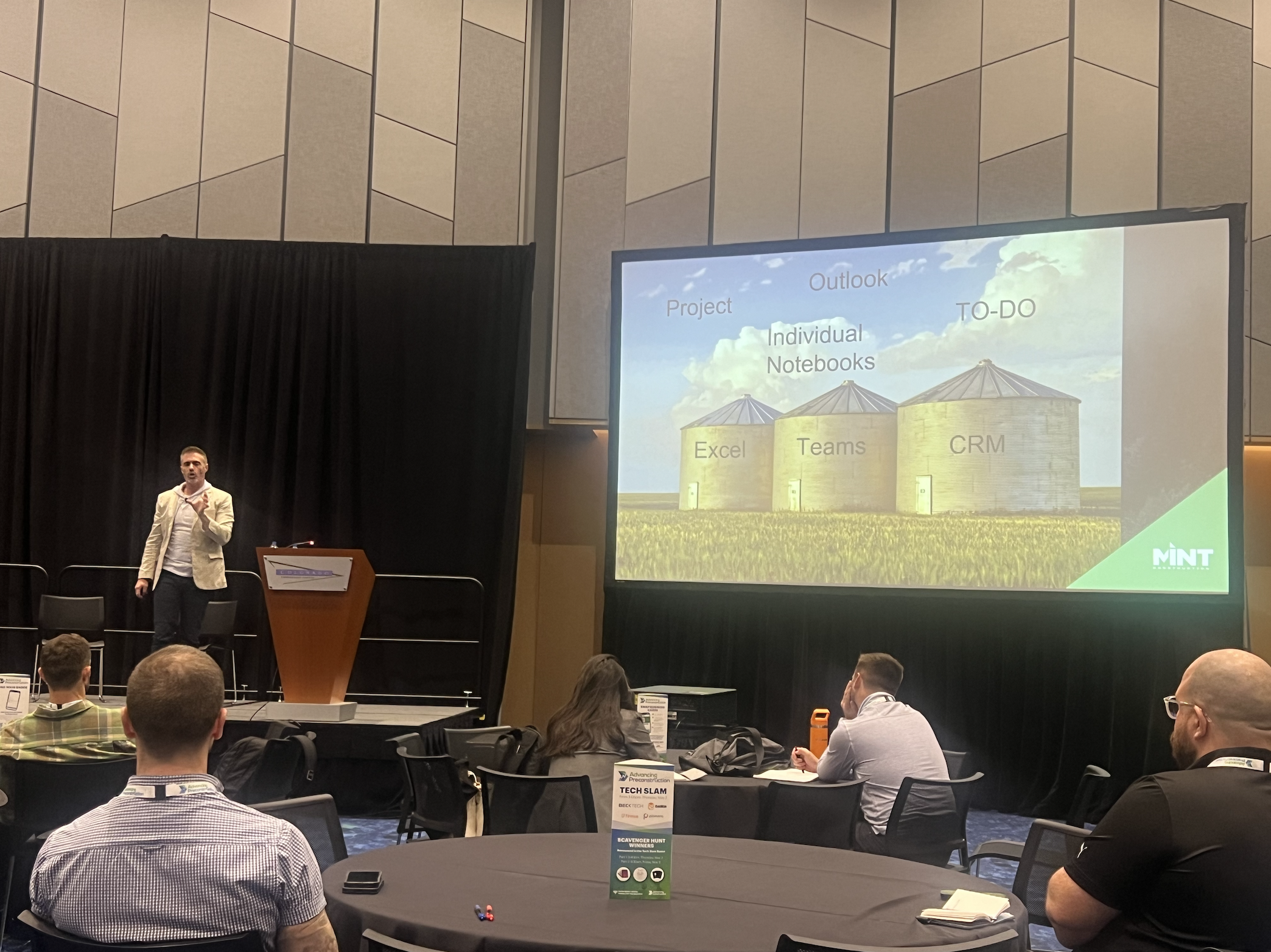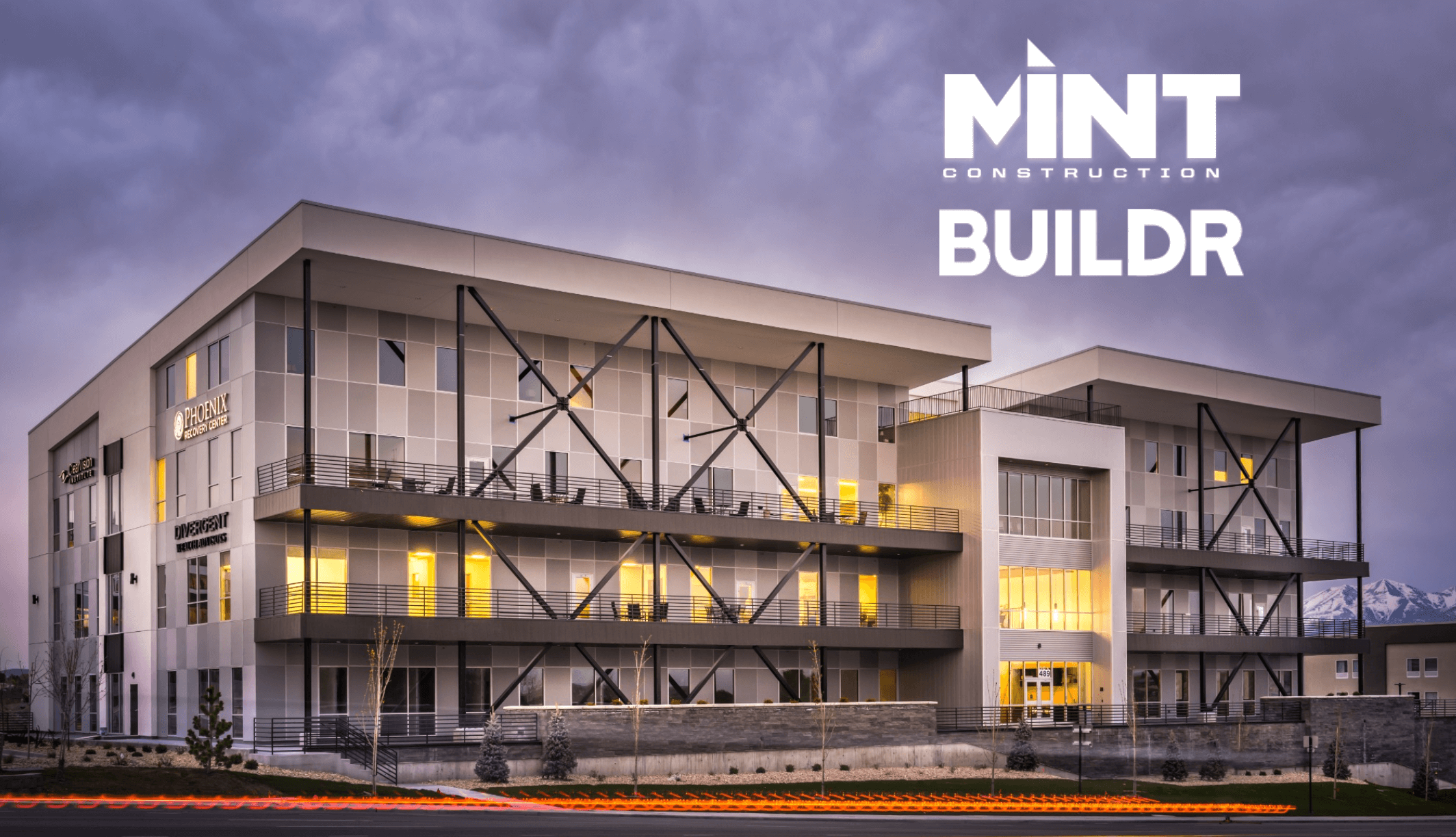
Winning the Preconstruction Game: Strategies to Create a Thriving Backlog - Part 2
Company culture, empowerment, and choosing the right tools for precon.
May 15, 2024
8 min read
Learnables

Michael Sullivan
Senior Growth Marketer

At Hanson Wade’s annual Advancing Preconstruction conference, Brandon Weaver hosted a session entitled “Leveraging Preconstruction Technology by Focusing on Metrics That Matter, Creating a Thriving Backlog & Becoming a Modern High Performing Contractor.”
This blog is adapted from that session and is the second part of a discussion by Brandon, the first part of which can be found here: Part 1.
Brandon Weaver is the VP of Business Development of Mint Construction and has held down the fort since 2018. He oversees business development and strategy, company culture, as well as development and improvement of internal processes.
Mint Construction is primarily a design-build GC that specializes in a little of everything—office buildings, industrial, hospitality, medical, retail, and multi-family, to name a few. They were relatively new in the Utah market and hovering at a $50mm building volume. Brandon Weaver and his team at Mint knew that they had to revolutionize their preconstruction processes to do more with the same amount of people. And that’s exactly what they did, growing to a projected $200mm in a few years without growing their staff.
Let's dig into some of the strategies Brandon implemented to accomplish such an impressive feat.
1. Prioritize company culture
"Treat your employees exactly as you want them to treat your best customers." - Stephen Covey
Everyone throws around the phrase “company culture” as a buzzword. Mint Construction decided to actually prioritize it.
Their reasoning was simple: doubling down on the idea that culture and people are more important than processes and technology has a direct impact on overall performance and success. The cherry on top? There's a trickle-down effect to the customer.
Brandon spent time digging into what successful companies outside of construction did in the realm of employee satisfaction and engagement and brought those lessons to Mint. Culture isn’t adding a ping pong table to your office or giving away free meals (though these things don't hurt). It’s about genuinely listening to and caring about your people.
"When they have the tools and things they want, they will innately take care of our customers,” said Brandon. “We don’t have to yell and scream or push to make customer focus here. Employee focus will naturally take care of your company and customers."
2. Ensure your employees are well-equipped and motivated
A major part of company culture is providing true empowerment, rather than empty axioms that your employees are empowered. Examples of tangible empowerment include:
Providing the right tools and resources
Promoting the ability to take ownership
Psychological safety
The “right” tools and resources are those that help your employees do their job faster and better. Allowing ownership is trusting in your people to do their job without micromanagement or fear that they’ll figure out your secret sauce.
Sometimes too much control strangles success, the very thing that your control is meant to produce. This is why letting others take the lead, even if they might not have yet proven their ability to, can be a risk worth taking.
What psychological safety looks like in the workplace
Psychological safety is a shared belief, held by members of a team, that the group is a safe place for taking risks.
Psychological safety allows your people to speak freely and be themselves; “there are no stupid ideas.” Pressure to fit a certain mold is not mentally healthy, and encouraging open and honest communication without fear of retribution will foster a culture of trust and mutual respect.
Brandon cited Google’s Arizona Project which studied what makes the best teams and found that psychological safety and open communication were key factors.
"The biggest thing you should take away from this work is that how teams work matters more than you think,” said Brandon, quoting Laszlo Bock, Head of Peoples Operations at Google. “There's a myth that we all carry inside our heads. We think we need superstars, but that's not what our research found. You can take a team of average performers, and if you teach them to interact the right way, they'll do things no superstar could ever accomplish."
In an industry with such a publicized skilled labor shortage (i.e., a superstar drought), it makes a lot of sense to look inward and mold your average performers into superstars.
To read more about psychological safety, check out our blog: 3 Reasons Why Psychological Safety is the Key to Having the Best Work Environment.
3. Instill operational clarity and empowerment
In the last few years, Mint Construction has implemented several operational improvements to enhance efficiency and collaboration within the company.
First, Brandon noted, they transitioned from using traditional estimators to “preconstruction managers,” who now handle both estimating and project management tasks. Same people, different title, more money, more empowerment.
"We don't have estimators anymore,” Brandon said. “We call them preconstruction managers. By giving them more responsibility and autonomy, they manage the projects better, leading to improved outcomes and client satisfaction."
This simple title shift from "estimator" to "preconstruction manager" ensures a more cohesive approach to project planning and execution. To foster better inter-departmental understanding and cooperation, Mint holds monthly meetings where team members discuss their roles and how they can support each other. These discussions help identify ways to streamline processes and improve overall project outcomes, creating a more integrated and supportive work environment.
Decide on values that influence your decisions and define your culture
Brandon and his team at Mint came up with some guiding principles that the company would always stand behind. When these principles are publicized and posted for all to see, not just on your website, they can act as constant reminders of what to embody and follow.
For a detailed explanation of Mint Construction's values, you can check out them out on their website.
Values can act as a source of wisdom when it comes to decison-making; projects to go after, people to hire, even technology to adopt. The level of adherence to these values depends on the C-Suite of your company—there's always a downstream effect.
4. Treat preconstruction like the most important phase of construction
Any GC will agree that the quality of planning determines the quality of building—the manner in which builders execute on projects is dictated by teamwork and strategy conducted at the preconstruction phase. Why, then, is precon such an afterthought for GC’s to implement software so they can do it better?
For a long while, an industry-wide emphasis on course-of-construction software due to marketing leaders like Procore and Autodesk took the spotlight away from precon. Only within the last 7-10 years has preconstruction software solutions made a dent in the market.
Adopt preconstruction software that suits your needs
Brandon explained that Mint Construction made preconstruction the focal point of their operations by reorganizing the company structure to prioritize this critical phase. He noted that Mint’s precon teams were all too siloed; everyone in their notebooks, spreadsheets, and even a (non-collaborative) CRM.

This siloing was restricting the company’s growth. It pushed the company to implement a cloud-based, unlimited-seat preconstruction platform (ahem, Buildr)—complete with an integrated CRM and workforce planning solution—to enhance data management and project tracking. This operational decision ensured all information was accessible across the company and always up-to-date.
By leveraging Buildr to streamline processes and improve accountability, Mint Construction better managed their resources and workflows. Additionally, the company placed a strong emphasis on forecasting (also in Buildr) and proactive management, which helps them anticipate potential issues and avoid emergencies, ultimately leading to smoother project execution and higher client satisfaction.
By providing a bird’s eye clarity, Buildr helped Mint focus on the right projects. This had a direct impact on the firm’s ability to scale from $50mm just a few years ago to $200mm projected this year, all with the same four estimators (or preconstruction managers, rather).
While Brandon and the Mint team use Buildr, he emphasized that he’s not a Buildr salesman and there are plenty of solutions on the market that could be fit for your company. When looking at preconstruction software, the features Brandon said to look for include:
Cloud-based
Collaborative (ideally unlimited seats)
Integrated CRM and workforce planning capability
Integration with course-of-construction software
Easy data management and opportunity tracking
S-curve financial forecasting
Go/No Go functionality

Blog
5. Be the Hub of Your Market
Mint Construction adopted a strategic approach to client and market engagement by focusing on building strong relationships with key stakeholders such as suppliers, brokers, banks, and consultants.
Instead of relying on extensive marketing efforts, Mint has used a hub approach to connect with potential projects and clients. This involves leveraging their network of contacts to generate project leads and opportunities. By maintaining close ties with industry professionals and understanding their needs, Brandon said, Mint Construction can effectively identify and pursue valuable projects, ensuring a steady flow of business without the need for heavy marketing expenditures.
"Finding projects is not as hard as I thought and through this process of being a hub, you can find really good projects without spending money,” said Brandon
Final Thoughts
Michael Moritz, the founder of Sequoia Capital, has this quote in the book "Smarter Faster Better" by Charles Duhigg: "The thing I love the most is when I see a startup really succeeding. The team is working well together, they’re hitting their milestones, and everyone is excited about the future. That’s when I know we’re on the right track."
Brandon adapted that quote to fit the context of Mint Construction: "The thing I love the most is when I see a building going up and the team is killing it. The supers are high-fiving each other at the job site, the project team has the next project waiting, and the developer already knows how to get the right jobs. When I see the entire team thriving, I know we're doing something right."
Success at the preconstruction stage is about giving in to the sports analogies that companies love to use when describing themselves. Everyone should feel empowered, safe in their roles, and part of something greater than themselves. Because at the end of the day, precon really is a team sport and it’s up to you to give your team the tools to play better.
Grow with intention
Brandon and Mint Construction aspire to only get as big as they can deliver the same experience on every project with the right client. They refer to every client as "partner" because that's how they want them to feel. These four tenets led to satisfied repeat work that Mint doesn't have to compete for:
Focus on the Who
Profitability over revenue
Guaranteeing the same experience to each partner (client and trade partner)
Creating a work environment that people want to be in
Siloed preconstruction leads to less profitable projects
Stay in the loop
Seriously, you should sign up to be a construction insider. Everyone will be so jealous of you.